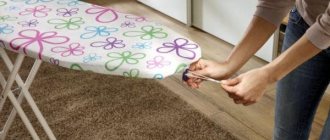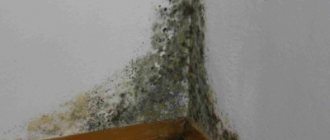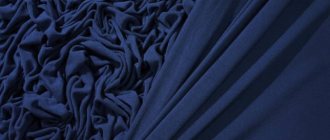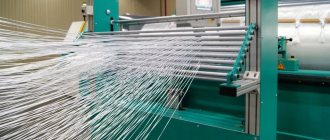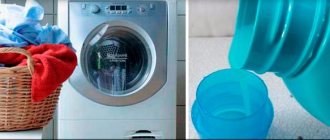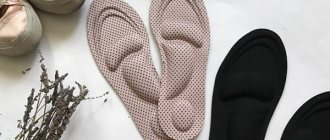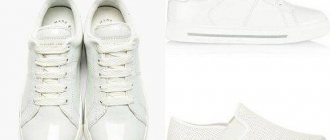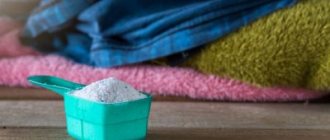Mohair is the name given to yarn made from the wool of Angora goats. Things knitted from angora are very warm, fluffy, and have an attractive appearance. But such products require special delicate care. We tell you how to wash mohair in our article.
Things made from natural angora cost a lot of money. And I must say that it won’t be very difficult to ruin such a thing, especially if you don’t know how to properly care for it, namely wash and dry mohair.
Composition and properties
Mohair is a yarn made from the wool of the Angora goat. The characteristics of goat hair make it necessary to add acrylic fibers or sheep wool to the yarn. Currently, the goat hair content cannot be more than 83%.
The uses of mohair are varied: it is used to make clothing items (suits, coats, sweaters, scarves, socks). As well as household textiles, for example, bedspreads, curtains, carpets, upholstery materials. Things made from mohair are fluffy and soft, very beautiful, but require special care.
The fur of Angora goats most often has a white color, a uniform structure and a luster shine. The fleece consists of transitional hair, which is mohair, and short guard hairs, otherwise called kemp, which are usually removed.
Curly mohair with sparse pile
Mohair fabric has many positive properties:
- elasticity;
- tensile strength;
- natural shine that does not disappear even after coloring;
- volume;
- fluffiness;
- low thermal conductivity;
- after dyeing you can get an unusually beautiful color;
- It burns very weakly and goes out almost immediately.
Rules for washing mohair
Mohair items can be washed either by hand or using a washing machine.
Before the procedure, carefully read the care instructions on the product label.
Let's find out how to wash mohair correctly so that something made from it will last you as long as possible and not lose its attractive appearance. By following simple rules, it is easy to wash a woolen jacket, sweater, dress, hat, etc.
Rules for machine washing mohair:
Types
There are three main types of mohair wool:
- Adult Mohair can be soft or coarse and is made from the hair of adult goats.
- Goatling Mohair is soft and fine, made from the wool of two-year-old kids after the second shearing.
- Kid Mohair is a very soft to the touch, fine wool, obtained from the hair of young goats after they have been cut for the first time.
What's good about mohair?
It should be noted that mohair is made from the wool of goats of different ages. The most delicate wool is that of young goats. The wool of young goats is called fleece, and it is sheared from the animal for the second time in its life. In adults, the so-called fleece of mature goats is sheared; it is coarser and tougher.
Fabrics made from mohair are easy to dye and hold dye well, therefore, items made from mohair will retain their bright colors for a long time. In addition, mohair perfectly tolerates “neighborhood” with other fabrics, which give it additional shine.
Mohair is stronger and warmer than wool, so it retains heat better in winter and does not overheat the body in summer. Unlike wool, mohair is not itchy and is well tolerated by people with sensitive skin. Mohair fibers are not damaged over time, so this material is very strong and durable. Clothing made from this amazing material does not wrinkle or stretch.
Despite all the obvious advantages of mohair, this material still needs to be looked after.
How to comb mohair and a couple more useful tips
Mohair toys: 1. If you start knitting a mohair toy, you will see that all the “fluffiness” has gone inside out. It's quite normal. Therefore, it is easier to turn out the parts and carefully comb them, and trim them if necessary. 2. You can comb it with a slicker brush. But it’s easier to do it with Velcro. Everyone in the house has at least one thing with Velcro (it could even be a son’s or daughter’s bib!). So there is a soft side and a harder side - with hooks. These are the hooks you should use to comb the toy. They fray the thread less and the result is more neat and even.
3. It is better to comb acrylic dry. But! It should be remembered that combed acrylic is not suitable for frequent use, since the fibers will break off upon contact with your hands. Therefore, if your amigurum plans to stand on a shelf, then brush it to your health. If a child squeezes it, then it is better either not to comb it at all, or to knit it with a different thread.
4. Before combing, it is better to hold the mohair over steam so that the long fibers do not break off (this happens if the knitting was tight enough). You don’t have to comb the mohair, but knit it, keeping the fibers on one side. This is how the thick fur effect is achieved. However, this requires experience and skill. But considering that the fibers are shifted to one side with each loop, it takes much more time!
5. Yarn with a minimum content of artificial fibers is best combed. Those. if it is mohair and acrylic, then the more mohair it contains, the shaggier the toy will be! For example, from a yarn that contains 80% mohair and 20% acrylic, you will get a very fluffy amigurumi.
Weed toys:
1. To ensure that the hairiness is on the right side, I turn the knitting and knit only on the wrong side. But you still need to try to lift the fibers from under the hook with your fingers, otherwise it will be difficult to comb them out, because the hook twists the thread several times during the knitting process. This is especially true for threads with long fibers. However, if it is difficult for you to adhere to this technique, then you can consider the right side to be the wrong side. Needlewomen often do this when using grass and other “hairy” yarn.
2. To make the loops better visible, you can add regular thread to the weed (for example, from a spool). But it still won't work out perfectly.
3. When knitting with grass, it is better to pull the thread from the inside of the ball, and not take it from above. Why is that? It turns out that the fibers go against the grain if you take the thread as usual - from the top. You can rewind the ball if it is more convenient for someone. However, if you knit with a thread with wool “against the grain” using the correct technology, the toy will be fluffier.
4. It is better to comb the grass with a slicker brush.
5. If you need to unravel part of the fabric, then you need to do this very carefully and slowly - in fact, one loop at a time. You can also try stretching the fabric itself - after this it is much easier to pull out the thread. And so on with almost every loop. If the villi are still tangled, help them free with a needle.
6. To sew pieces made of grass, it is better to use the same thread, but for convenience, try cutting it. This will make the task easier for you.
Helpful Tips:
1. You need to comb the connected and stuffed parts separately, but NOT the fully assembled toy, since the individual parts are carefully combed and you can “climb” into hard-to-reach places (joints of parts). 2. Before combing, moisten the pieces (you can hold them over steam or spray them with a spray bottle). This way we will ensure uniform and gentle combing. 3. Yarn containing components such as mohair, wool, down, etc. is suitable for combing. 4. Never comb toys knitted from 100% acrylic. This, of course, can be done, but on condition that this toy is not played with and it sits quietly somewhere on a shelf. A brushed acrylic toy will roll up over time and take on an unattractive appearance.
How to wash
If the fabric is not very dirty, then it is wiser to use dry cleaning. Not all synthetic detergents are suitable for mohair. In some cases, it is enough to treat the emerging spot with a weak soap solution (it should be warm - 30 ° C). After this, wash the area with clean warm water and blot both sides with a terry towel. The item must be dried flat on a horizontal surface.
Advice: Never dry a wet item with a hairdryer or soak mohair clothing before washing.
Another option is to turn to a dry cleaner for help, but they will not give any guarantees that the appearance of the wool will not be spoiled.
How to wash in a washing machine:
- Select delicate mode, the water temperature should not exceed 30° C.
- Use liquid detergents that do not contain bleaches. It is not recommended to use ordinary washing powder, as its particles are difficult to wash out. Additional rinsing will adversely affect the appearance of the product, as it will disrupt the structure of delicate mohair.
- Before loading an item into the drum, turn it inside out and fasten all buttons, if any.
- Remove the item immediately after finishing the main wash. It is recommended to wring out and dry the product by hand and not in a drum.
Advice: Add a little glycerin to the washing machine compartment. This will give the product even greater softness.
Hand washing should be done using a liquid detergent designed for delicate fabrics. Shampoo for hair or washing pets is also suitable for these purposes.
If you have to wash with ordinary washing powder, do not pour it directly onto the item. Dissolve the detergent in water and only then lower the product into the solution. Do not wrinkle or rub the mohair, as this will most likely cause the knit structure to deform. As a result, the product will stretch.
After rinsing, gently wring out the item and wrap it in a terry towel to absorb moisture. Then carefully place it on a horizontal surface. Never dry mohair items on hangers, lines, hanging near heating equipment or in direct sunlight.
Tip: To straighten the pile on a completely dry item, go over it with a brush or a dry, clean cloth.
How to dry mohair and can it be ironed?
An item hung on a rope, hanger or the back of a chair will stretch out, but the mark of the fold will remain on it.
Mohair should only be dried in a horizontal position.
- When the canvas swells in the basin, the model is wrapped in a towel and gently squeezed so that water is absorbed into the fabric.
- The product is unrolled and laid out on the table, with a cloth that absorbs water well placed under it. The mohair is turned over during the drying process.
- Do not expose mohair items to bright sunlight, hang them on a radiator, or use hot air.
Ironing fabric, especially openwork knitted fabric, is highly discouraged. If there is an urgent need for this, the model is turned inside out and processed with an iron set to minimum power through a thin fabric. But there are many ways to iron things without an iron; for example, a steam bath is suitable for sweaters and other mohair items.
To make the pile fluff up again, comb it with a soft brush, put the item in the freezer for 2 hours or hold it over steam (hang it over a container of boiling water or turn on very hot water).
Probably, almost all of us have at least one soft and pleasant-to-touch mohair item. Warm sweaters, dresses, sweaters, suits and even coats are made from the wool of Angora goats. Mohair is also used for rugs, bedspreads, curtains, blankets and carpets.
Caring for these woolen items is not easy. Washing them requires special delicacy. Of course, it is possible to resort to dry cleaning services, but in this case you need to know that mohair products wear out faster when dry cleaned. Therefore, it is better to choose regular washing.
How to unravel felted wool
The process of dissolving an old knitted item begins with preparatory work.
Product preparation
Initially, you should remove all additional parts : patch pockets, belts, straps,
buttons, etc. Then you should
thoroughly wash the product in warm water and dry it, but not completely.
IMPORTANT! It is necessary that the product remains slightly damp! This way the threads unravel much easier, without clinging or getting tangled with each other.
Completing of the work
The next step is to determine in which direction the item was knitted
: from bottom to top or vice versa.
ADVICE ! If you started knitting from the bottom, then first the collar is ripped off, then the sleeves, and at the end the seams on the shoulders and sides of the product are cut.
On each knitted piece you should find the end of the woolen thread, and start unraveling the clothes from there.
There is the least amount of hassle when unraveling home knitted clothes. There will be more problems with a factory-made product: it can be knitted entirely or in parts, and then sewn together. It is possible that the factory first wove knitted fabric, and only then cut out clothing parts from it and sewed them together. In this case, all the threads will be cut, and a long skein of yarn can be obtained from them only by tying their ends.
Attention! When unraveling, the threads need to be wound into loose balls. Worn threads should be immediately separated from more or less whole threads in order to use them in subsequent knitting for different areas.
Secrets and tricks
- Tie the individual threads together with flat knots. At the same time, leave the ends of these threads at least a couple of centimeters long so that you can later thread them with a crochet hook.
- New threads are added to the worn threads for strength, even in a variety of colors. The result is a melange yarn that is stronger and more elegant.
- For items made from very tangled and very fluffy woolen threads, use the following product to make them easier to unravel . Warm water mixed with hair balm or shampoo is poured into a basin. Place the knitted product there for 15–20 minutes. Then, without removing it from the water, they carefully unravel it into threads.
- When the item is too felted and this method still does not give an effect, you can try washing the woolen item in a machine with boiling water and cutting out all the fragments that cannot be unraveled.

